We saved seeds from a Grenadian black pumpkin way back in 2019 – and didn’t plant them out until 2024.
When we did, we got this:
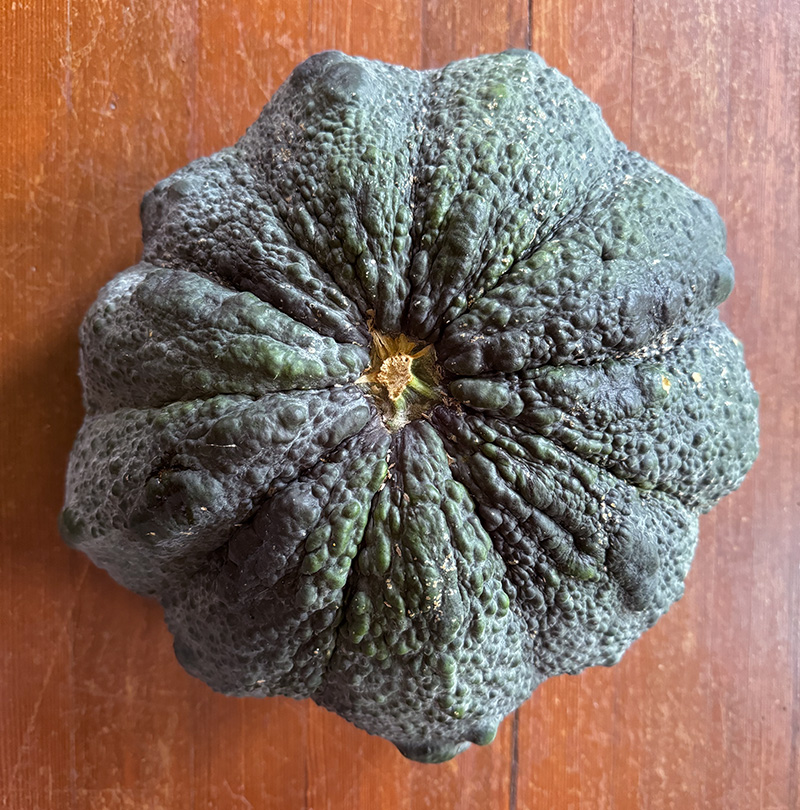
I didn’t think a pumpkin of that color was a Cucurbita moschata. There were lots of interesting pumpkins down in Grenada that happily crossed together, but few looked anything like the C. moschata types we’d grown in the US.
Here are some examples of Grenadian pumpkins:
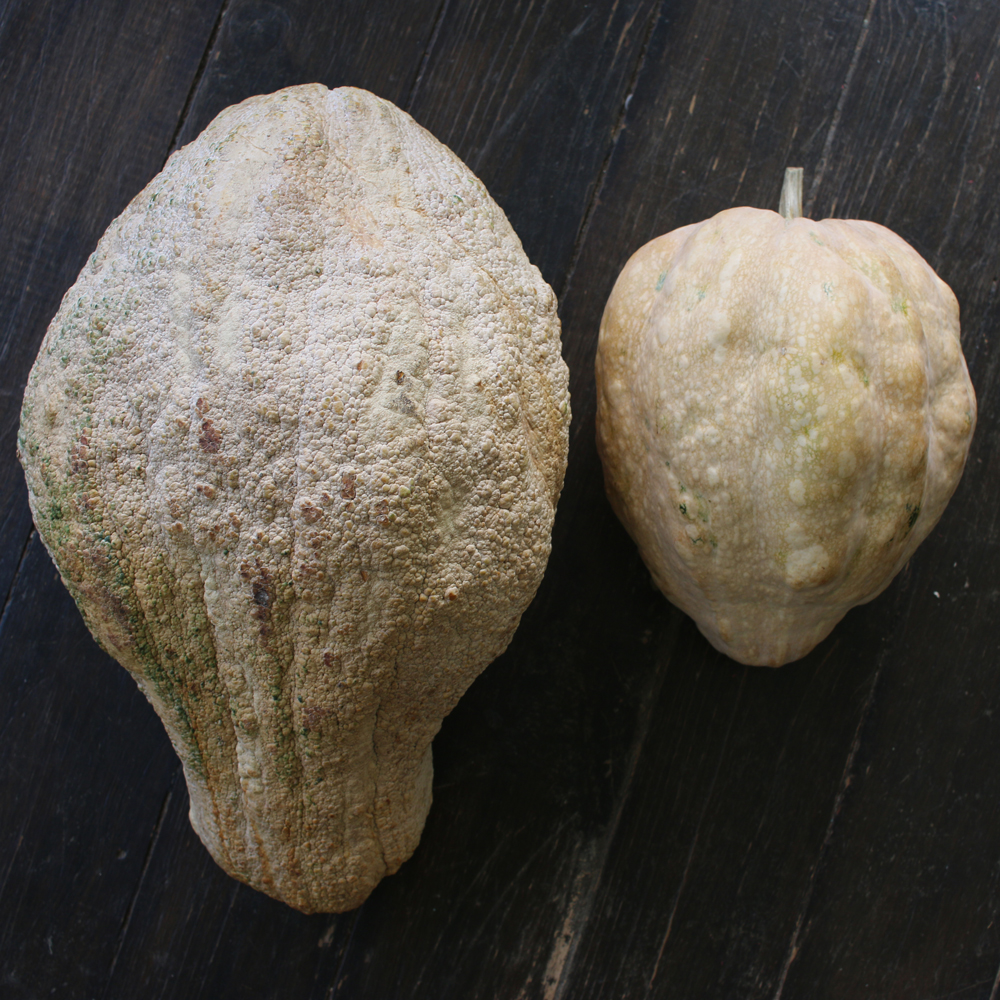
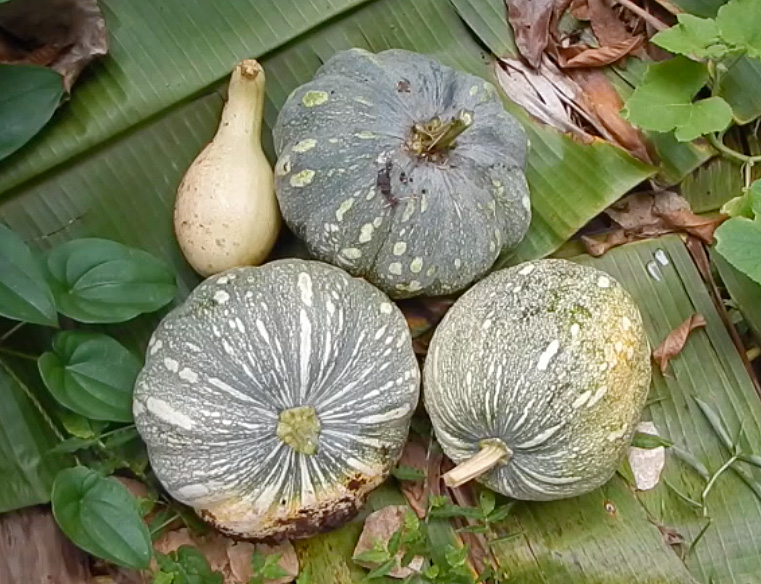


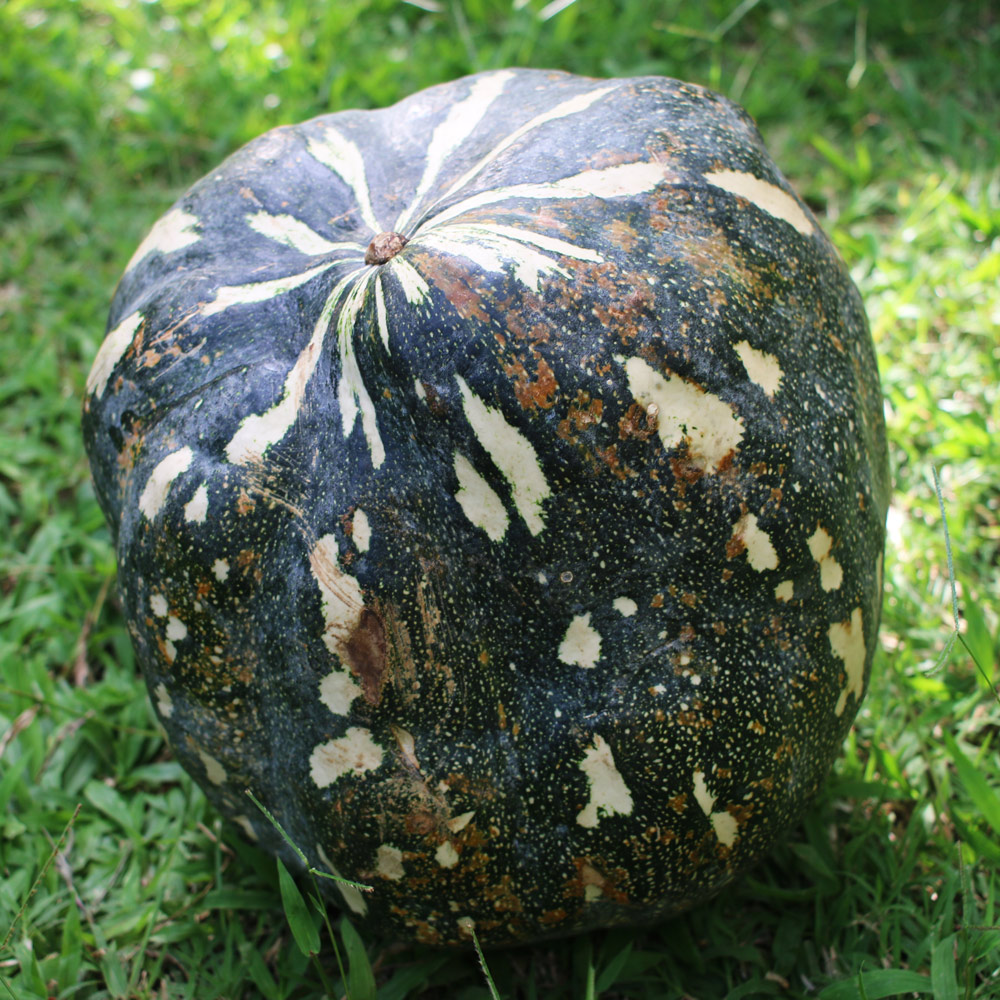
The colors, shapes, and skin textures varied widely.
When I planted the black pumpkin seeds, I assumed it was a different species from the Seminole pumpkins we normally grow.
I was wrong.
I planted the seeds we saved from the single black pumpkin we grew in 2024 out in the field and ended up with what we now call “Zombie Pumpkins.”
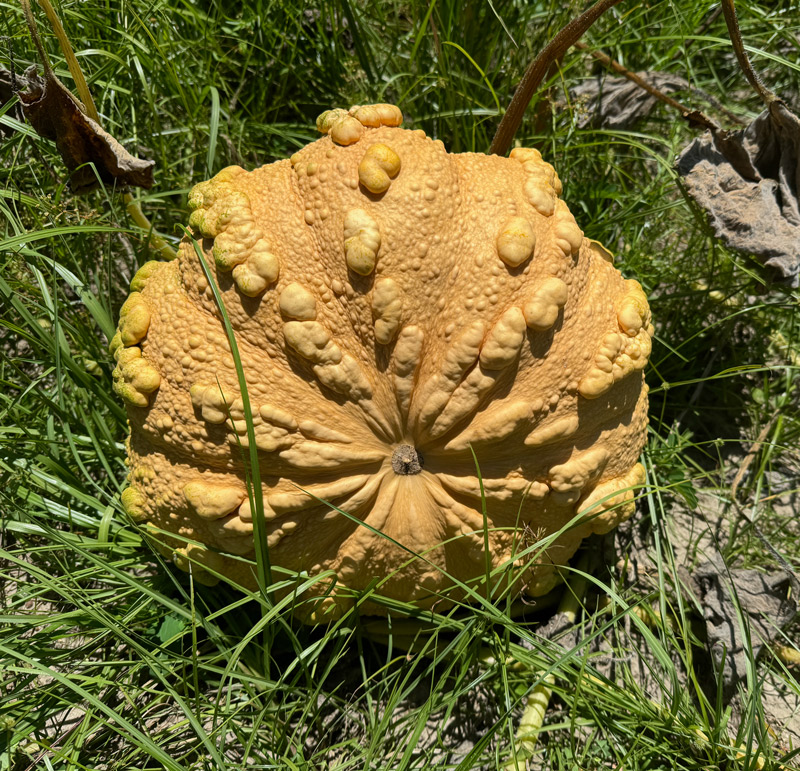

Now I thought those pumpkins were the end of the story.
But oh no… it gets weirder.
This spring we worked hard to get the Grocery Row Gardens cleaned up, mulched and planted. Yet around the edges, we ended up with a few volunteer plants… including pumpkins.
I assumed they were Seminole pumpkins, like usual.
I was wrong again.
They were hybrids between the Grenadian black pumpkin and our line of Seminole pumpkins.
As spring stretched into summer, we lost control of the gardens and the pumpkins conquered all the edges, running over trees, covering rows of peppers, and eating the open spaces beyond the beds.
As the pumpkins developed, the colors, shapes and textures were surprising. Some were almost black, some striped, some tan with warts, some dark green with warts, some round, some like pears – it’s an amazing mix. It seems the Grenadian black pumpkin had a lot of genetic variation in it, unlike our Seminole pumpkin line.
It will be fun to see how they grow next year. They weren’t watered, fed or sprayed, and yet they produced a few hundred pounds of pumpkin. Eating them will be interesting. The “Zombie pumpkins” that had Black Grenada pumpkin mothers were better tasting than either the original Black pumpkin or their Seminole fathers, with thick, non-stringy orange flesh and small seed cavities. If that keeps up, we may have a real winner landrace!
The Caribbean has a similar summer climate to Lower Alabama, which means these guys are right at home here.
Saving seeds and letting things run is a lot of fun – I highly recommend letting your pumpkins cross (on purpose or otherwise!) and seeing what you get. Thank the Lord for happy accidents.
Here’s the harvest video I posted yesterday:


10 comments
That’s amazing, I love treasure hunting in the garden. It’s spring down here in aus so my pumpkin cross patch is just starting. Happy days
That is fantastic – I love spring.
This is really cool. I picked up some seeds from the Etsy store.
Excited to plant them in the spring and continue the landrace. Hoping the pumpkin will store well on the shelf like the seminole pumpkin.
Take care.
We shall see!
Hey David, congrats on the store.
Is there any chance of pumpkins crossing and becoming toxic, as squash can do?
There is always a slight chance, but no more than if you were growing any squash. It’s easy to tell, though – if a squash is bitter, throw it out.
Ah. I didn’t know that bitterness was a surefire way to distinguish between toxic vs non-toxic.
Thanks!
Yes – it’s one of the safer problems you could have. If a squash tastes bitter, chuck it!
Dave, are you aware of any moschata varieties that are yellow instead of green during the immature stage? I’ve read about them being common in the caribbean, but I haven’t had any luck finding any in the US so far.
I have not seen them like that. Only C. maximas.
Comments are closed.